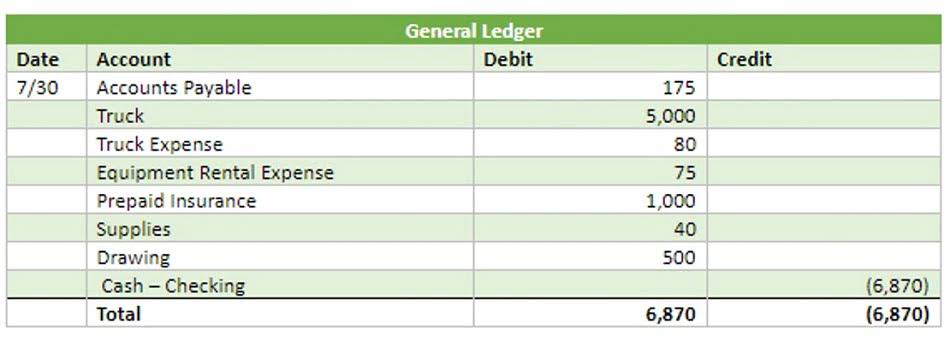
The value of these raw materials increases over the production of the product. Raw materials go through any number of types of operations in the course of manufacturing, such as welding, cutting, etc. When figuring out direct material costs, it’s important to distinguish between direct and indirect. Indirect costs are subsidiary material costs, such as shop supply costs, perishable tools and equipment costs. Unlike direct materials and direct labor, manufacturing overhead costs are indirect expenses that support the manufacturing process but do not directly contribute to the creation of the product. Examples include factory rent, utilities, depreciation of machinery, and indirect labor costs like supervisors and maintenance staff.
- Equally, you will also incur the costs of holding excess inventory stock or risk being left with stock you cannot sell.
- The higher the production-related expenses, the narrower your profit margins are likely to be.
- Maintaining detailed records of overhead expenses is essential for accurate allocation.
- Your total manufacturing costs are essentially an expense analysis that calculates how each of your company’s departments contributed to producing a finalized product.
- These include things like the electricity to power the machines or the rent for the building where production takes place.
Real-World Examples: Applying the Direct Costs Formula
For example, suppose a company has an internal call center that handles customer service calls and provides recording transactions sales reps support. In that case, the call center’s expenses might be allocated to the manufacturing and sales departments. The same part will be used repeatedly, which means more opportunities for economies of scale.
Company
Also, use our template and calculator to start taking control of your manufacturing costs today. Use this calculator to determine your total manufacturing cost by entering your direct materials, direct labor, and manufacturing overhead costs. Total manufacturing costs represent the sum of direct materials, direct labor, and manufacturing overhead incurred during a given period. This comprehensive view is key for understanding true product costs and analyzing margins.
Takt Time vs. Cycle Time vs. Lead Time: The Differences Explained
This enables profitability with lower production volumes but reduces gross margins. A company’s cost structure is comprised of both direct and indirect costs. Understanding the differences between these two types of costs, and how they each impact operations, is critical for effective managerial accounting and financial planning. Indirect costs, also known as overhead costs, are costs that cannot be accurately or easily traced to a single cost object. Examples include administrative salaries, rent, utilities, insurance, and depreciation. Yes, the formula can be adjusted based on the specific needs of the manufacturer.

Once a business has calculated its manufacturing cost, it can use this information to make better decisions about its business. For example, it can use its manufacturing cost to set a total direct manufacturing cost formula price to cover its costs and make a profit. For example, in the case of clothing, a thinner material can be used to create a shirt or jacket without sacrificing quality. However, if you want to increase the thickness of your materials, you will need to use more material and pay more for it. The tax rate has increased in many areas of the country, meaning that companies will cost more to manufacture their products.
- You can link dependent tasks to avoid costly delays and set milestones to track progress.
- Essentially, it represents the total cost of producing the goods that will be sold to customers.
- When business costs relate to production activities they are generally classified as ‘direct’ or ‘indirect’.
- Conversely, indirect materials are generally used in many types of products in insignificant quantities per unit.
- Before automation was widespread it was often done on the basis of direct labor hours.
- This reduction occurs because fixed costs (such as machinery and overhead expenses) are spread over a larger number of units.
Determine Allocation Method (e.g., machine hours, labor hours)

It consists of costs of the manufacturing process, including direct materials, direct labor, and manufacturing overhead costs. The third component of the total manufacturing cost formula is the manufacturing overhead, also known as indirect expenses. These expenses include all the additional costs (in addition to the direct labor and materials) that are needed in order https://www.bookstime.com/ to maintain the production line. Manufacturing overhead costs do not include marketing or accounting, for example, as those have more to do with running the overall business and are not directly related to production. These indirect costs are still significant when determining total manufacturing costs, but they would be included in overhead costs instead of direct labor or materials. It is important to note that what one company determines is an indirect cost, another company might designate it as a direct cost.

Total Manufacturing Cost Calculator
However, these expenses are often incurred for the entire facility, making it challenging to attribute them to individual products. Understanding the true total cost of producing goods and services enables a business to make sound decisions, particularly in the areas of pricing, budgeting, operational efficiency, and taxation. Direct costs need to be properly tracked, measured and valued so they can be correctly attributed directly to a specific cost object, such as a product, service or business unit. They form a substantial part of the product’s total cost and are easily traceable. Moving forward, aPriori will develop a new blog post to correspond with each RDL update. The Kerkhoff Consulting Group is aPriori’s primary source for material price data.
- For manufacturers, calculating COGS is possible only after finding the value of COGM.
- Conversely, increasing the variable cost component (i.e. direct materials and labor) lowers the breakeven point.
- Work in process inventory, waste, and scrap all need to be accounted for as well.
- This includes production workers, assemblers, quality control personnel, and machine operators.
- It also includes administrative expenses like office supplies/paper clips/staplers/etc.
Overheads directly impact a business’ balance sheet and income statement so it’s important to track and allocate these expenses. The three primary components of total manufacturing cost are direct materials, direct labour, and manufacturing overheads. Having this accurate, real-time view of your manufacturing operations expenses allows you to improve efficiency. Calculating direct costs manually can be time-consuming and prone to errors, especially when dealing with multiple projects, fluctuating material costs, or a large workforce. Enerpize is a comprehensive business management system designed to streamline operations across accounting, sales, inventory, HR, and more. It offers an intuitive interface that enables businesses to monitor financial data, track expenses, and generate real-time reports all in one centralized system.

Is total manufacturing cost the same as manufacturing overhead?
Along with many other manufacturing accounting metrics, total manufacturing costs can easily be tracked in an MRP/ERP system. Using this kind of software with a built-in manufacturing accounting system frees up managers’ time for activities that help actually grow the company. Conversely, indirect materials are generally used in many types of products in insignificant quantities per unit. These are not included in direct materials and fall into the manufacturing overhead. For example, for a furniture manufacturer, timber, paddings, and textile are the direct materials used in production, while glue or sandpaper are indirect materials. Calculating total manufacturing cost allows manufacturers establish the amount they’re spending to make goods.